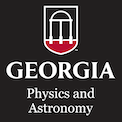Transfer of learning is often described as the overaching goal of education. I will provide a broad overview how the theoretical perspectives on transfer of learning have evolved over time and delve deeper one perspective of transfer that has served as an overaching framework for some of the projects in our reasearch group over the past few years. In particular I will discuss projects that utilize this perspective to facilitate problem solving. One of these projects focuses on facilitating transfer of mathematical integration to problem solving in a calculus-based physics course for future engineers. The other focuses on the use of visual cueing to facilitate learning and problem solving. I will discuss how these interdisciplinary efforts have advanced our knowledge of how students learn and solve problems in STEM disciplines.
Events Calendar View
-
Departmental Colloquium
Jan 22, 2015
Research on Transfer and Implications for Learning and Problem Solving
-
Departmental Colloquium
Feb 26, 2015
Computer Simulation Studies of Polymer Adsorption and Aggregation - From Flexible to Stiff
An overview is given on recent computer simulation studies of polymer adsorption and aggregation using generic coarse-grained models. The simulations are performed with Monte Carlo methods in generalized ensembles (multicanonical and parallel tempering) and analyzed from a canonical and microcanonical view. As examples polymer chains interacting with a flat patterned surface or being confined in a spherical cage will be discussed. Of particular interest is the scaling behavior of conformational transitions in dependence of the polymer's bending stiffness. Bending stiffness also plays a key role for semiflexible polymer aggregation. Our results show that this is the distinguishing parameter that controls whether amorphous aggregates or twisted bundle-like motifs are formed.
-
Special Colloquium
Mar 4, 2015
Search For Extraterrestrial Intelligence and Why It Will Fail
In recent years astronomers have discovered that essentially all stars are orbited by planets, thus raising the hopes of many persons that life and even technological life is common in our Milky Way galaxy and will soon be found. Notwithstanding the existence of so many planets, we present reasons why technological life is a very rare phenomenon and thus will be very difficult to discover.
-
Departmental Colloquium
Mar 5, 2015
Violent Events in Rocky Planetary Systems
Implications for the fate of technological civilizations, including our own
-
NanoSEC Seminar
Apr 10, 2015
Nonlinear Optics at Reduced Dimensions

Guest: Prof. Hayk Harutyunyan, Department of Physics, Emory University
Friday, April 10, 2015 4:00 pm - 5:00 pm
Location: Riverbend Research South Laboratory AuditoriumWhen light interacts with low-dimensional systems, new optical new interesting phenomena can arise because of the reduced dimensionality. Classic examples include quantum dots with discrete electronic energy levels or plasmon resonances of metallic nanoparticles. In addition to the dimensionality or shape, the light-matter interaction can be further tuned by using optical nonlinearities. Typically, the induced polarization currents depend linearly on the intensity of the radiation field. However, when the linear relationship breaks down new interesting phenomena arise like frequency conversion or intensity dependent refractive index. We combine this new possibility with the interesting properties of low dimensional systems and use them for applications ranging from subdiffraction resolution imaging to on-chip frequency conversion.
-
CSP Lunch Seminar
Aug 18, 2015
Uniform sampling with stochastic growth methods with applications to polymers
Page 59 of 121, showing 6 records out of 723 total, starting on record 349, ending on 354

